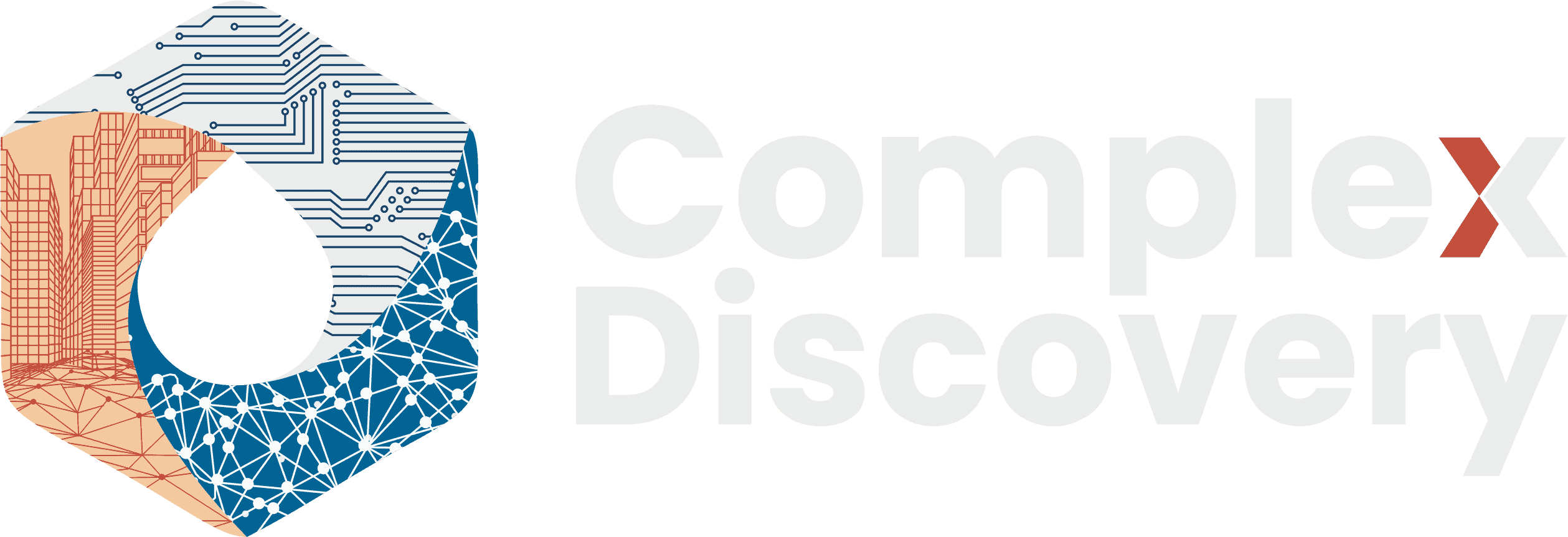Editor’s Note: This article is the fifth post in our multi-part series on the Summer 2025 eDiscovery Pricing Survey, conducted by ComplexDiscovery OÜ in partnership with the EDRM (Electronic Discovery Reference Model). The semi-annual survey drew input from 70 legal, business, and technology professionals, providing data-driven insights into the evolving economics of eDiscovery.
Here we turn to review services — the area that often represents the single largest portion of discovery budgets. Unlike processing or hosting, where commoditization dominates, review remains shaped by human labor, expertise, and delivery models. The survey results highlight not only how reviews are priced, but also how they are staffed and delivered.
Content Assessment: The Human Core of eDiscovery: Review Services in the Summer 2025 Pricing Survey
Information - 94%
Insight - 93%
Relevance - 94%
Objectivity - 95%
Authority - 96%
94%
Excellent
A short percentage-based assessment of the qualitative benefit expressed as a percentage of positive reception of the recent article from ComplexDiscovery OÜ titled, "The Human Core of eDiscovery: Review Services in the Summer 2025 Pricing Survey."
Industry Research
The Human Core of eDiscovery: Review Services in the Summer 2025 Pricing Survey
ComplexDiscovery Staff
If forensics is the front door and processing the engine room, then review is the human core of eDiscovery. It is where legal teams engage directly with documents, where technology meets attorney judgment, and where costs can quickly escalate if not managed carefully.
The Summer 2025 survey reveals a market in transition: pricing remains rooted in hourly and per-document models, but both technology-assisted review (TAR) and the dominance of remote delivery are reshaping expectations. Review accounts for anywhere from 60% to 80% of total eDiscovery spend in many matters, so even small shifts in pricing or delivery can significantly affect overall litigation costs.
Predictive Coding and TAR: Fragmented and Experimental
Technology-assisted review (TAR) stands out as one of the least standardized areas of the survey. The largest group (39%) reported use of alternative pricing models, underscoring ongoing experimentation in how TAR is billed. Another 27% cited costs below $75 per gigabyte, while only 9% reported mid-range pricing between $75 and $150 per gigabyte. A significant 26% expressed uncertainty, reflecting both varied adoption and lack of market clarity.
The absence of a clear market band reflects TAR’s dual identity: for some providers, it is bundled into platform fees as a differentiator; for others, it is billed separately as a specialized service. This patchwork aligns with buyer behavior — many clients now expect TAR to be included “out of the box” in review platforms, rather than treated as a premium add-on.
In the near term, TAR pricing will likely remain fragmented, with bundled or results-based models gaining traction. In the longer term, as generative AI and continuous active learning become ubiquitous, TAR may migrate toward subscription-style or value-based pricing, where costs reflect efficiency gains rather than raw data volumes.
Review Pricing - Per GB Cost for Predictive Coding in a Technology-Assisted Review - Summer 2025
Onsite Review Attorneys: Premium Hourly Rates
For onsite managed review, nearly half of respondents (49%) reported attorney rates above $40 per hour, while another 36% fell in the $25–$40 range. Only a small minority (4%) noted alternative models, and about 11% expressed uncertainty.
Onsite review remains the most expensive model because of the costs tied to physical infrastructure, security, and location constraints. These reviews are often required in high-stakes regulatory matters or sensitive government cases where remote access is restricted. The higher concentration above $40/hour demonstrates that clients are willing to pay premiums in these scenarios, despite having cheaper remote alternatives.
In the near term, onsite review will remain a premium-priced service used sparingly. In the longer term, demand may contract further, creating a niche market where the scarcity of providers drives even higher hourly rates for the cases that still require it.
Review Pricing - Per Hour Cost for Document Review Attorneys to Review Documents Onsite - Summer 2025
Remote Review Attorneys: The Prevailing Mid-Range
Remote managed review paints a different picture. The majority (53%) reported rates between $25 and $40 per hour, with another 31% reporting costs above $40. Very few respondents (1%) cited rates below $25, and only 3% reported alternative models. Roughly 11% expressed uncertainty.
This band aligns with industry expectations, where most U.S.-based contract attorneys are staffed at $30–$50 per hour, depending on jurisdiction and complexity. Remote delivery removes geographic limitations, allowing providers to tap wider labor pools and stabilize costs. Clients see it as more efficient and flexible, particularly for large-scale reviews.
In the near term, this mid-range will remain the prevailing rate, even in the face of inflationary pressures, because of the competitive nature of the market. In the longer term, automation and generative AI may suppress demand for routine review, capping growth in rates but sustaining premiums for specialized work, such as privilege review, multilingual cases, or regulatory-driven productions.
Review Pricing - Per Hour Cost for Document Review Attorneys to Review Documents Remote - Summer 2025
Onsite Per-Document Review: Highly Fragmented
When asked about per-document pricing for onsite managed review, the responses were widely dispersed. More than a third (36%) said they did not know, underscoring the lack of market consensus. Among those reporting specific rates, the largest group (24%) charged more than $1.00 per document, while another 21% priced between $0.50 and $1.00. Only 4% reported rates below $0.50. Notably, 14% reported alternative pricing models, showing meaningful experimentation beyond per-document billing.
The wide spread highlights the challenges of per-document pricing in onsite settings. Because document complexity, case sensitivity, and team oversight can vary significantly, providers hesitate to commit to flat per-document fees.
Near term, onsite per-document review will remain inconsistent, appealing primarily to corporate buyers looking for budget predictability. In the long run, as onsite review itself declines, these models may become rare and specialized, surviving only in high-value regulatory or investigatory cases.
Review Pricing - Per Document Cost for Document Review Attorneys to Review Documents Onsite - Summer 2025
Remote Per-Document Review: Lower Costs, Similar Variability
For remote managed review, the most common rate (34%) fell within the $0.50–$1.00 per document band. Nearly as many respondents (29%) expressed uncertainty, while 17% reported rates above $1.00 per document. Another 14% reported alternative models, and 6% cited pricing below $0.50.
Remote per-document pricing shows more consistency than onsite, but still reflects fragmentation. Clients often favor it for predictability in RFPs or where case budgets are tightly monitored. Providers balance it carefully against staffing costs, with some offering hybrid models that combine per-document rates for bulk review with hourly pricing for specialized tasks.
In the near term, most remote per-document billing will cluster in the $0.50–$1.00 band, serving as a competitive tool in larger projects. In the longer term, as AI reduces document volumes requiring human review, per-document billing may evolve into hybrid human-AI models, with humans handling fewer but higher-value documents — potentially at higher per-document rates despite shrinking total volumes.
Review Pricing - Per Document Cost for Document Review Attorneys to Review Documents Remote - Summer 2025
Why Review Pricing Matters
Taken together, these results reveal a dual reality. Hourly models — especially for remote review — are relatively standardized, with clear mid-range expectations. But per-document and TAR pricing remain fragmented, with high levels of uncertainty and significant reliance on alternative models.
The respondent profile sharpens this interpretation. With law firms (43%) and service providers (36%) comprising nearly 80% of the survey base, the results reflect both buyers seeking predictability and providers balancing labor costs with competitive pressures. And with almost 70% of respondents in litigation support, the results emphasize perspectives rooted in client-facing negotiations and defensibility, rather than technical efficiency.
The heavy U.S. skew (90%) reinforces these findings: while offshore review may offer lower rates elsewhere, the survey reflects U.S. market norms, where review attorney rates remain competitive but anchored by remote delivery.
An International Perspective: Beyond the Survey’s Reach
With only 10% international representation among survey respondents, this pricing analysis necessarily reflects a predominantly U.S.-centric view. This limited participation doesn’t indicate that international pricing data doesn’t exist — instead, it highlights that this particular survey didn’t capture the whole global picture. Yet this gap itself reveals important dynamics about the evolving global review market.
What We Cannot Quantify
The survey’s U.S. concentration means we cannot provide specific benchmarks for critical international questions: How much do offshore review centers actually save versus U.S. remote review? What premiums attach to multilingual review or multi-jurisdictional privilege analysis? How does TAR pricing vary in jurisdictions with different judicial acceptance levels? Without representative international data, these remain matters of negotiation rather than market knowledge.
This absence is particularly striking given the routine nature of cross-border matters. Major investigations span continents, data breaches trigger regulatory responses globally, and internal investigations regularly require teams versed in multiple legal systems. Yet pricing transparency for these complex engagements remains elusive.
Structural Trends We Can Observe
While specific pricing eludes us, industry participants consistently report several patterns:
- Offshore review centers have evolved well beyond pure labor arbitrage, now emphasizing specialized expertise in regulatory compliance, contract analysis, and AI training. This consideration suggests pricing has likely evolved as well, though we cannot quantify the shift from this survey.
- European markets operate under fundamentally different constraints — including GDPR compliance, data localization requirements, and varied court acceptance of predictive coding — which create complexities that presumably affect pricing structures.
- Asia-Pacific hubs like Singapore and Hong Kong have developed unique delivery models for multi-jurisdictional Asian matters, potentially offering innovative alternatives to traditional billing approaches.
The lack of international pricing transparency creates real challenges for budget planning, vendor selection, and strategic optimization of global delivery models. Companies facing international investigations cannot reliably estimate costs across different jurisdictions, while providers struggle to demonstrate value against unclear market benchmarks.
The Path Forward
This survey’s U.S. concentration shouldn’t be read as a failure but as a baseline for building truly global benchmarking. Future efforts would benefit from regional partnerships with local legal technology organizations, culturally adapted data collection methods, and methodology alignment across different legal systems.
The 10% international participation may actually represent valuable pioneers — respondents willing to share data in a predominantly U.S.-focused study. Their participation suggests an appetite for global benchmarking, even if comprehensive international coverage remains aspirational. As cross-border matters become the norm rather than the exception, understanding global pricing dynamics becomes essential for managing eDiscovery costs and risks effectively.
Until more inclusive data collection efforts emerge, the international review market remains a critical blind spot — not because data doesn’t exist, but because it hasn’t been aggregated into a unified view that would benefit all stakeholders navigating our increasingly borderless legal landscape.
Looking Ahead
Review remains the human core of eDiscovery — labor-intensive, cost-sensitive, and central to case strategy. The survey data, while predominantly U.S.-focused, suggests several trajectories worth monitoring.
In the near term, clients should expect stability in U.S. remote hourly review, but continued variability in TAR and per-document models. The fragmentation in pricing models reflects a market still searching for the right balance between predictability and flexibility. For organizations with international matters, this uncertainty is compounded by the lack of transparent global benchmarks, making vendor selection and budget planning particularly challenging.
Longer term, the impact of generative AI looms large, with the potential to reduce routine review while amplifying the value of specialized human judgment. This technological shift may develop differently across global markets — jurisdictions with fewer legacy review operations might leapfrog directly to AI-assisted models. In contrast, markets with established offshore review centers may see more gradual transitions.
The path forward requires not just technological innovation but also greater pricing transparency across borders. As the industry evolves, the most successful providers and buyers will be those who can navigate both the technological transformation and the global complexity of modern litigation and investigations.
In Part 6 of this series, we turn directly to generative AI in eDiscovery — exploring how respondents view its pricing, adoption, and disruptive potential across review and beyond.
“As eDiscovery adapts to rapid technological shifts and mounting regulatory demands, benchmarking pricing is essential,” said Kaylee Walstad, Chief Strategy Officer of EDRM. “ComplexDiscovery’s survey provides the data we need to understand current costs and prepare for the future. EDRM is proud to support this important resource.” – July 9, 2025
Assisted by GAI and LLM Technologies
Additional Reading
- Processing, Hosting, and Project Management Pricing: The Engine Room of eDiscovery in the Summer 2025 Survey
- The Front Door of eDiscovery: Forensic Pricing Insights from the Summer 2025 eDiscovery Survey
- The People Behind the Pricing: Respondents to the Summer 2025 eDiscovery Pricing Survey
- Summer 2025 eDiscovery Pricing Trends: Setting the Stage
- ComplexDiscovery OÜ – Winter 2025 eDiscovery Pricing Report: A Market in Transition
- eDiscovery Surveys Archives – ComplexDiscovery
Source: ComplexDiscovery OÜ







































